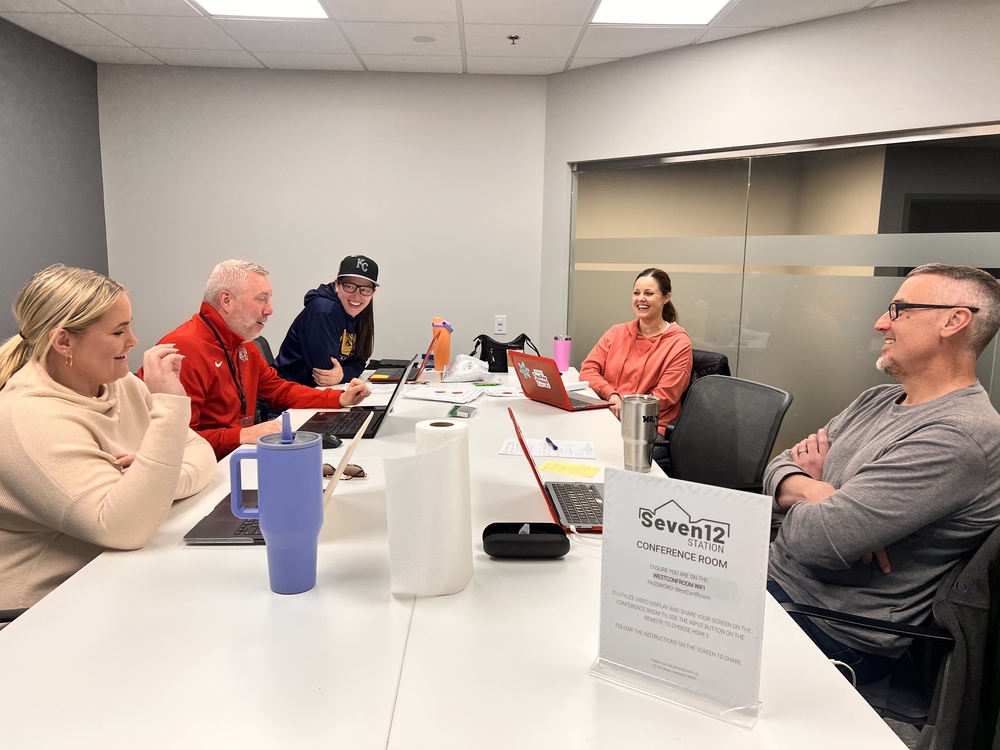At the April 14 Board of Education meeting, Lansing Middle School Principal Brooks Jenkins and sixth-grade science teachers Josh Yoakam, Amanda Thomas, and Alisha Holyfield shared an innovative classroom project that integrates artificial intelligence (AI) and project-based learning (PBL). The presentation highlighted the school’s participation in a professional learning opportunity through the Center for Reimagining Education (CRE) and showcased how students are engaging in new ways.
Reimagining Education with Purpose
Lansing was selected as one of only three Kansas school districts—alongside Bonner Springs and Piper—invited to “reimagine education” using AI in partnership with CRE and the University of Kansas. The goal was to rethink how learning happens, without constraints, and explore how AI could enhance both student engagement and instructional practices.
The pilot, currently taking place in a second-period sixth-grade science class, focuses on engaging students through choice, voice, and hands-on learning.
“We didn’t want students to just receive content—we wanted them to interact with it,” said Amanda Thomas. “This meant creating opportunities for them to take ownership of both their process and their outcomes.”
Meeting Students Where They Are
Students were placed in one of three instructional groups based on a pre-assessment and teacher observation:
Core Curriculum Group: Students followed the established science curriculum aligned with state standards.
Enrichment Group: Students extended their learning by exploring deeper-level questions and tasks.
Project-Based Learning Group: Students who demonstrated content mastery early were invited to investigate a question of their choice using structured project management tools.
Teachers rotated among groups and supported students flexibly. Assessments included journals, digital quizzes, labs, progress check-ins, and student reflections.
Student Feedback and Voice
A video featuring sixth-grade students was shared during the meeting. The students explained how AI helps them brainstorm ideas, learn grammar and writing skills, and better understand science concepts. They talked about enjoying hands-on projects like the egg drop experiment and working in groups to design solutions.
One student said, “I like learning by doing. Working together helps us talk through ideas and actually do the science.”
Safe and Responsible AI Use
The team introduced Magic School AI as the primary platform for students to interact with AI. Teachers emphasized safety and responsible use, guiding students on how to ask meaningful questions and reminding them not to share personal information.
“Just like we teach students how to use Google responsibly, we’re now teaching them how to use AI responsibly,” said Josh Yoakam. “We want them to understand it’s a support tool—not something that does the thinking for them.”
The long-term plan includes creating an AI guidance document for both staff and students.
Student Innovation and Engagement
Teachers were surprised by the creativity and ownership students demonstrated. Some student project examples included:
A geology-focused video presentation connecting science to a potential career interest.
A student-created podcast about how medications interact with body systems.
A collaborative slide deck on chemical reactions.
“Giving students a little structure and support, then letting them explore, led to impressive results,” said Alisha Holyfield. “It’s been exciting to see them take charge of their learning.”
Next Steps and Statewide Impact
The project has been well received by both students and staff. Its success has helped pave the way for KU to expand the initiative to three additional Kansas school districts, with a focus on more rural communities. Meanwhile, the Lansing team is continuing to build out the program locally, with plans to expand it to additional class periods, subject areas, and grade levels.
“We’re trying to build something thoughtful and sustainable,” said Principal Jenkins. “It’s about helping students build skills for an evolving world—problem-solving, creativity, collaboration—and understanding how to use technology as a tool.”
District Recognition
Board members expressed appreciation for the team’s intentional design and focus on student learning. Superintendent Marty Kobza commended the effort, and acknowledged the leadership of Director of Teaching and Learning Miles Azzeh and Director of Communications Sharon Burns for supporting this work and the district’s partnership with the Center for Reimagining Education.

